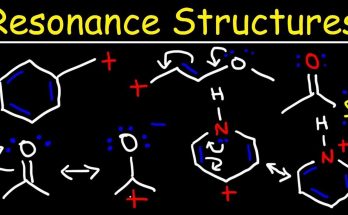In a marketplace where attention is fleeting and loyalty is hard-won, brands are increasingly seeking ways to connect with audiences on a deeper, more enduring level. While logos, slogans, and color palettes help shape identity, they often fall short of creating the kind of emotional resonance that drives long-term engagement. That’s where a signature movement comes in. A signature movement is more than a campaign or a cause—it’s a unifying idea that reflects your brand’s values and invites people to be part of something bigger than a transaction. It’s a call to action that transforms customers into advocates and businesses into cultural forces.
At its essence, a signature movement is about purpose in motion. It’s the difference between selling a product and standing for a belief. When a brand champions a movement, it signals that it’s not just here to make money—it’s here to make a difference. This kind of positioning resonates with modern consumers, especially those who are increasingly values-driven in their purchasing decisions. People want to align with brands that reflect their ideals, whether that’s sustainability, inclusivity, creativity, or empowerment. A movement gives them a reason to care, to engage, and to share.
The power of a signature movement lies in its ability to create community. When people rally around a shared belief or mission, they form connections—not just with the brand, but with each other. This sense of belonging can be incredibly powerful. It turns customers into participants and transactions into relationships. Consider how brands like Patagonia have built movements around environmental stewardship, or how Dove has championed real beauty and body confidence. These aren’t just marketing messages; they’re cultural statements that invite ongoing dialogue and action. They give people a reason to stay engaged beyond the point of sale.
A signature movement also provides a strategic anchor for brand storytelling. It offers a consistent narrative thread that can be woven through content, campaigns, partnerships, and product development. This coherence helps build recognition and trust, as audiences come to understand what the brand stands for and what to expect from it. It also provides a filter for decision-making. When faced with choices about where to invest, what to say, or how to respond to current events, a brand with a clear movement can act with confidence and clarity. The movement becomes a north star, guiding both internal culture and external expression.
Importantly, a signature movement must be authentic. It can’t be manufactured or opportunistic. Audiences are quick to detect when a brand is jumping on a bandwagon or using a cause as a marketing gimmick. For a movement to resonate, it must be rooted in the brand’s history, values, and actions. It must be lived, not just proclaimed. This means aligning internal practices with external messaging, ensuring that the brand’s behavior reflects its stated beliefs. When there’s alignment, the movement gains credibility. When there’s a disconnect, trust erodes.
Building a signature movement also requires patience and persistence. Movements don’t happen overnight. They grow through consistent effort, meaningful engagement, and a willingness to listen and evolve. This long-term perspective can be challenging in a business environment that often prioritizes short-term results. But the payoff is worth it. A well-established movement can become a powerful differentiator, a source of customer loyalty, and a driver of cultural relevance. It can help a brand weather market shifts, attract top talent, and create a legacy that extends beyond products or profits.
Technology and social media have made it easier than ever for brands to spark and sustain movements. Digital platforms allow for real-time engagement, storytelling at scale, and the amplification of voices that align with the brand’s mission. But they also raise the stakes. In a hyper-connected world, every action is visible, and every misstep is magnified. This makes integrity and transparency more important than ever. Brands must be prepared to back up their words with action, to own their mistakes, and to engage in honest conversations with their communities.
A signature movement also invites innovation. When a brand is committed to a cause or belief, it naturally seeks out new ways to express and advance that mission. This can lead to new products, services, partnerships, and experiences that reinforce the brand’s identity and deepen its impact. Innovation becomes purpose-driven, not just profit-driven. It’s about finding creative ways to serve the movement and the people who believe in it. This kind of innovation is not only more meaningful—it’s often more sustainable, because it’s grounded in a clear and compelling reason to exist.
Ultimately, a signature movement transforms a brand from a name into a narrative. It gives people something to believe in, something to belong to, and something to act on. It elevates the brand from a passive presence in people’s lives to an active force for change. In doing so, it creates emotional depth, cultural relevance, and enduring value. In a world where brands are constantly vying for attention, those that lead with purpose and invite participation are the ones that stand out—and stay. A signature movement isn’t just good branding. It’s good business.



